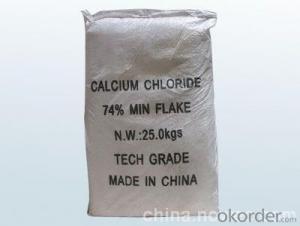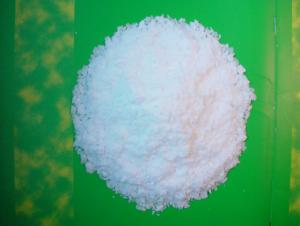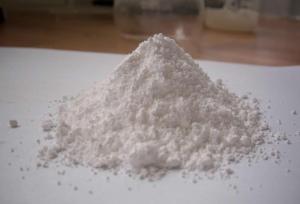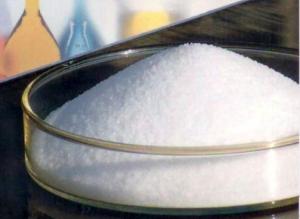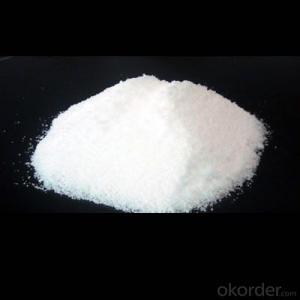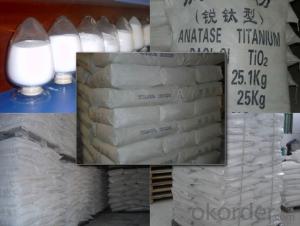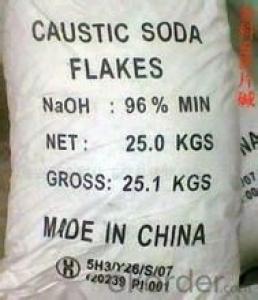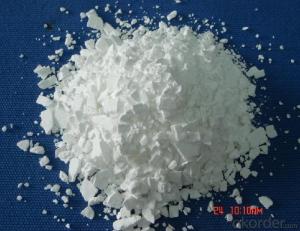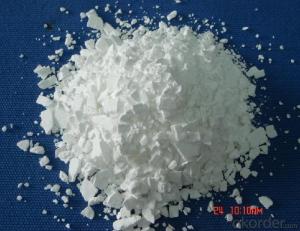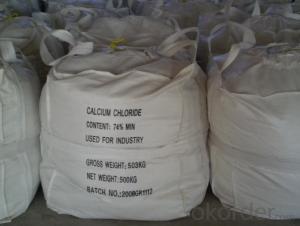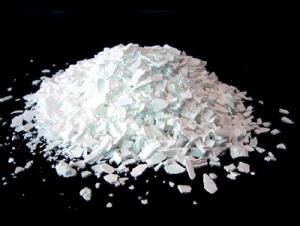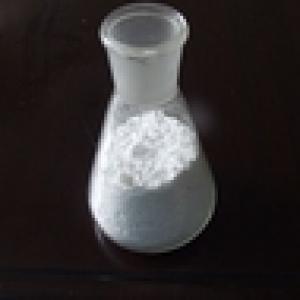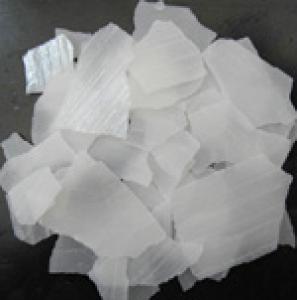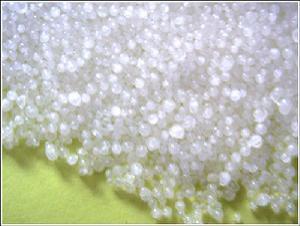Calcium Chloride74% with High Quality and Competitive Price
- Loading Port:
- China Main Port
- Payment Terms:
- TT or LC
- Min Order Qty:
- -
- Supply Capability:
- -
OKorder Service Pledge
OKorder Financial Service
You Might Also Like
1. Structure of Calcium Chloride Description:
Property: White flake or grain crystal, its solubility is strong; Easy to dissolve in water. It has causticity.
Molecular Formula: CaCL2 , CaCL2 .2H2O
Molecule Weight: 110.98 , 147.01
CAS No.: 10043-52-4
Appearance: White Flakes / Ball / Powder/Granular
2.Main Features of Calcium Chloride:
calium chloride anhydrous ,cacl2 74% calcium chloride
Calcium chloride is an inorganic salt, which exists as solid or liquid. Solid calcium chloride is a white, crystal
- General
1) Calcium Chloride :74%Min
2) White flakes
4) Direct manufacturer
5) CAS:10035-04-8
II - Tech Standard: HG/T 2327-2004
III - Application:
1) - Snow melting and de-icing in winter
2) - Dust controlling in road mantenance
3) - Anti-icing and accelerator for concrete
4) - De-inking in paper manufacturing
IV - Packaging: 25kg/bag in a PP woven bag with PE inner liner.or 1000kg/bag(Jumbo bag)
V - Delivery time: 20 days
VI - Production Capacity: 50mt per day
VII - advantage:
1) Most advanced equipment,
2) Good quality(white,not yellowing and little impurity),
3) Most competitive price,
4) Excellent and all-round service
3.Calcium Chloride Images
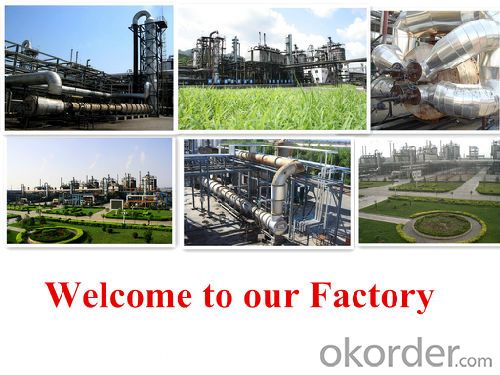
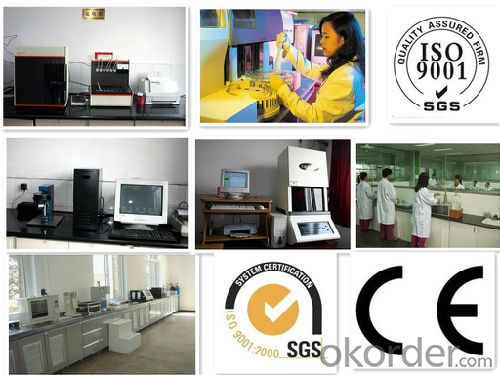
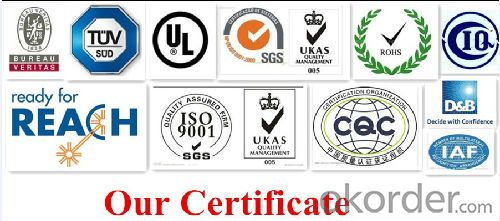
4.Calcium Chloride Specification
Item (Industrial Grade) | Quality Index | |
Purity ( As CaCL 2 ) | 74-77% | 90-94% |
Sulphate ( As CaSO 4 ) | 0.2 % max | 0.2% max |
Magnesium & Alkali Metal Chlorides ( As NaCL) | 3.5% max | 4.0% max |
Alkalinity ( As Ca(OH) 2 ) | 0.2% max | 0.25% max |
Water insoluble | 0.1% max | 0.2% max |
Item (Industrial Grade) | Quality Index | |
Purity ( As CaCL 2 ) | 74-77% | 90-94% |
Sulphate ( As CaSO 4 ) | 0.2 % max | 0.2% max |
Magnesium & Alkali Metal Chlorides ( As NaCL) | 3.5% max | 4.0% max |
Alkalinity ( As Ca(OH) 2 ) | 0.2% max | 0.25% max |
Water insoluble | 0.1% max | 0.2% max |
Arsenic ( As ) | 0.0002% max | 0.0002% max |
Heavy metals ( As Pb ) | 0.0005% max | 0.0005% max |
5.FAQ
Are you a factory or trading company?
----We are the import-export branch of the factory--CNBMGroup. There are production unit and sales unit in our Group. Production unit is only responsible for producing cargos. We are in charge of sales. Even there is a "trade" in our name,but actrually we are factories.
• What is the minimum order?
----One Metric Ton
• How can I get sample for testing?
----Kindly send us your address, we will send the sample to you.
• Where is your factory located? How can I visit the factory?
----Our factory located in Shandong, China. It is in the north of China as a sea-side city. It is one hour flight from Beijing.
- Q: Organic chemistry extraction lab. If the KBr wasn't there I would just add HCl to protonate the NH2, but I'm not sure if that will affect the KBr or the carbon chain. Both of these are in an aqueous phase.
- The amine will certainly coordinate to K+, but the interaction is not very strong and hydrogen bonding from water will compete efficiently. Also, if your amine is soluble in water, you are not going to be able to isolate it by turning it into the corresponding ammonium salt.
- Q: Which crop feet can provide C N inorganic salts for fungal growth
- Plant growth requires a variety of inorganic salts, which require the most is nitrogen, phosphorus, potassium containing inorganic salts. If a lack of some inorganic salts, plants can not grow normally. Kind of crops need fertilization, farm manure contains organic matter, the microbial decomposition of the soil will produce a large number of inorganic salts for plant growth and utilization, the role of fertilizer is to provide a variety of plant growth of inorganic salts. Therefore, in agricultural production, the application of fertilizer and farm manure is intended to provide a variety of inorganic salts for crops.
- Q: What are the effects of inorganic salts on plant growth?
- P: to promote the development of seedlings and flowers open, so that the fruit, the seeds mature early. Lack of performance: the plant is particularly short, leaves were green, and purple.
- Q: How to isolate the effects of inorganic salts on enzyme solubility
- The raw materials of cotton stalk were pretreated with inorganic salt to dissolve part of lignin and hemicellulose, so as to improve the enzymatic hydrolysis efficiency. Sulfuric acid, sulfuric acid and sulfuric acid were used to pretreat the cotton stalk. The solid solution was separated and the lignin removal rate and the elution rate of the pentosan were determined. The solid phase was hydrolyzed at 50 ℃. Enzyme hydrolysis conversion rate; the process of glucose, pentosan, lignin for material accounting.
- Q: Would you like some rice when you cooked rice or millet gruel?
- But there is a situation, that is, in the boiled polenta, corn paste, the production of Wo Wo first corn products, should add a small amount of alkali. This is because the corn contains niacin is very high, but there are 63% to 74% can not be absorbed by the body combined with niacin, long-term consumption of this corn food may occur niacin deficiency - podular disease: dermatitis , Diarrhea and dementia. Early symptoms include lazy weakness, loss of appetite, chapped lips, tongue swelling and pain. If the disease continues to develop, will make the skin in the sun dermatitis, face, hands and feet skin will appear red, long blisters, peeling, brown pigmentation, rough and wrinkles and other symptoms. In order to avoid this situation, the best way is to add some alkali in the corn food, that is, in the boiled polenta, corn batter, do Wo head, the amount of some alkali. This can make the combination of corn in the release of niacin released into a free niacin, alkali-added corn food generally niacin release rate of up to 37% to 43%, and also save vitamin B1 and vitamin B2, very It is good.
- Q: Think about the physical and chemical properties of salt and sugar. What properties do these substances have in common? Describe which properties you could use to distinguish between them. What properties and units would you use to describe their physical and chemical characteristics? List as many as you can.
- Salt: inorganic, ionic bond, soluble in water (ionizes); forms a crystal lattice structure as a solid. Sugar: organic compound, mostly covalent bonds, also soluble in water but does not ionize, can be burned, tastes good (just kidding).
- Q: A bit tall please help me one!
- As a result of the community on the misuse of waste batteries, such as: a button battery can pollute 600,000 cubic meters of water, a 5-cell can make a square meter of land is not grass, resulting in some public opinion bias, so that our waste disposable battery recycling And chaos dealing with the work, resulting in some unnecessary waste and mistakes.
- Q: Please help me!
- For the best answers, Organic chemistry, branch of chemistry dealing with the compounds of carbon. While it is only the fourteenth most common element on earth, carbon forms by far the greatest number of different compounds. Organic chemistry is of vital importance to the petrochemical, pharmaceutical, and textile industries, where a prime concern is the synthesis of new organic molecules and polymers. Compounds containing only hydrogen and carbon, of which there are many thousands, are called hydrocarbons; the simplest is methane (CH4). In general, a particular type of organic compound, such as an alcohol, aldehyde, ether, or ketone, is identified by the presence of a characteristic functional group of atoms. The functional group is the part of the molecule most responsible for its particular chemical nature. Organic compounds containing nitrogen are of great importance in biochemistry. They generally contain the amine group (NH2). Molecules containing both the NH2 and COOH groups are called amino acids and are the building blocks of proteins AND Sodium azide is the inorganic compound with the formula NaN3. This colourless azide salt is the gas-forming component in many car airbag systems. It is used for the preparation of other azide compounds. It is an ionic substance and is highly soluble in water. It is extremely toxic. Hydrazine is an organic compound without carbon. Carbon di oxide is a inorganic compound with carbon
- Q: How to extract inorganic salts in soil?
- Find a piece of mud, with water, filter out the permeate, filter with filter paper. The liquid was placed in a beaker and dried to obtain white crystals
- Q: Is the inorganic salt the same as the saline?
- Saline is sodium chloride solution, most people use the point is 0.9%.
Send your message to us
Calcium Chloride74% with High Quality and Competitive Price
- Loading Port:
- China Main Port
- Payment Terms:
- TT or LC
- Min Order Qty:
- -
- Supply Capability:
- -
OKorder Service Pledge
OKorder Financial Service
Similar products
Hot products
Hot Searches
